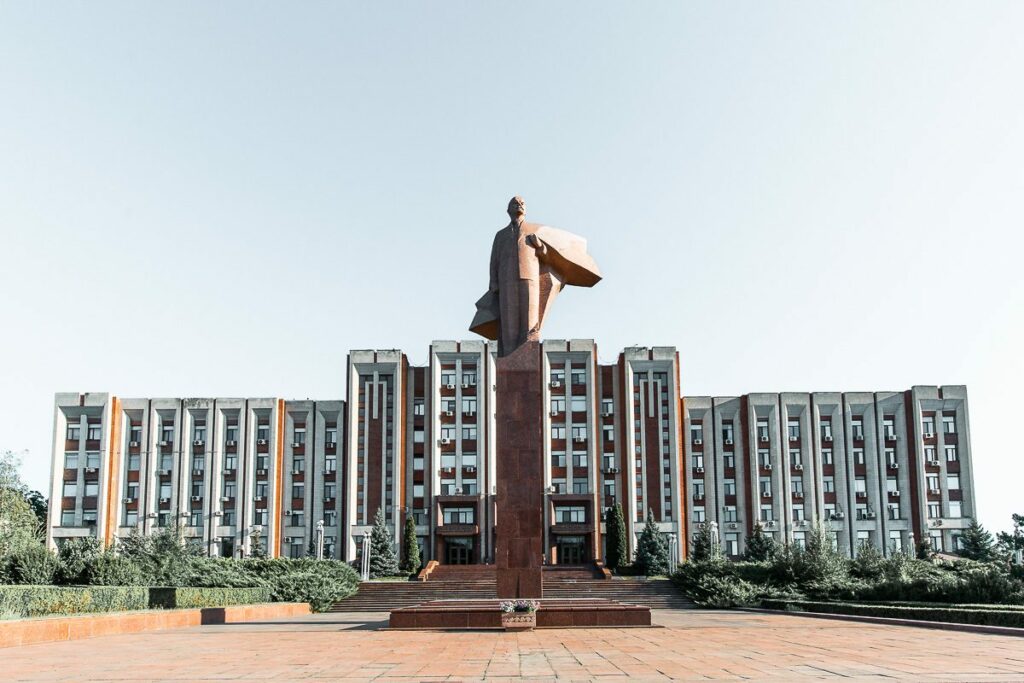Tiraspol, Moldova – Navigating the Historic Heart of Transnistria

Introduction:
Situated along the banks of the Dniester River, Tiraspol, the capital city of Transnistria, Moldova’s eastern region, stands as a testament to a unique blend of history, resilience, and distinct identity. As the administrative center of a self-proclaimed republic, Tiraspol carries a rich historical narrative, architectural allure, and a sense of autonomy that defines its character. In this extensive exploration, we embark on a journey through Tiraspol’s streets, delve into its historical foundations, and unravel the multifaceted layers that make it a distinctive and intriguing destination.
Section 1: Historical Vistas
Subsection 1.1: Ancient Origins
Embark on a historical journey to uncover Tiraspol’s ancient origins. Explore archaeological evidence and traces of early settlements that lay the groundwork for the city’s enduring connection to the region’s past.
Subsection 1.2: Ottoman and Russian Influence
Delve into Tiraspol’s history during the Ottoman and Russian periods. Discuss the city’s strategic importance, architectural evolution, and the impact of imperial powers on shaping its unique cultural and historical identity.
Section 2: Architectural Resilience
Subsection 2.1: Soviet-Era Monuments
Admire Tiraspol’s architectural resilience, featuring iconic Soviet-era monuments. Discuss the influence of socialist realism on the city’s skyline, with landmarks that stand as testaments to a bygone era.
Subsection 2.2: Transnistrian Parliament and Presidential Palace
Explore the architectural significance of the Transnistrian Parliament and Presidential Palace. Discuss the history, design, and political importance of these structures in shaping Tiraspol’s contemporary identity.
Section 3: Cultural Mosaic
Subsection 3.1: Transnistrian National Museum
Immerse yourself in Tiraspol’s cultural mosaic at the Transnistrian National Museum. Discuss the exhibits, artifacts, and historical narratives that unfold, providing insights into the region’s unique cultural heritage.
Subsection 3.2: Performing Arts and Cultural Festivals
Explore Tiraspol’s vibrant cultural scene, including performing arts and cultural festivals. Discuss theaters, musical events, and the city’s commitment to fostering creative expressions that celebrate Transnistria’s distinct identity.
Section 4: Urban Dynamics
Subsection 4.1: Tiraspol City Center
Stroll through the heart of Tiraspol, a city center that merges historical charm with modern dynamics. Discuss the evolution of the urban landscape, commercial districts, and the delicate balance between preservation and progress.
Subsection 4.2: Residential Quarters
Discover the diverse residential quarters of Tiraspol, featuring a mix of architectural styles. Discuss urban planning initiatives, housing developments, and the city’s efforts to provide a comfortable living environment for its residents.
Section 5: Economic Landscape
Subsection 5.1: Industrial Centers
Explore Tiraspol’s economic landscape, characterized by industrial centers and economic activities. Discuss the city’s role in supporting local industries, trade, and its contribution to the economic vitality of Transnistria.
Subsection 5.2: Local Markets and Commerce
Celebrate Tiraspol’s local markets and commercial activities. Discuss traditional crafts, bustling markets, and the resilience of local businesses, showcasing the economic diversity that defines the city.
Section 6: Recreational Retreats
Subsection 6.1: Dniester River Embankment
Escape to the scenic Dniester River embankment, a recreational retreat in Tiraspol. Discuss the history, leisure activities, and the role of this picturesque area in providing residents with a tranquil escape.
Subsection 6.2: Sports and Outdoor Activities
Explore Tiraspol’s sports and outdoor activities. Discuss local sports clubs, recreational spaces, and the city’s commitment to promoting a healthy lifestyle among its residents.
Section 7: Culinary Traditions
Subsection 7.1: Transnistrian Cuisine
Savor the culinary traditions of Tiraspol through Transnistrian cuisine. Discuss local eateries, traditional dishes, and the city’s role as a gastronomic destination, showcasing the flavors that define the region.
Subsection 7.2: Fusion of Culinary Influences
Indulge in the fusion of culinary influences within Tiraspol’s diverse restaurant scene. Discuss how the city embraces global culinary trends, catering to a cosmopolitan community with a taste for varied and innovative dining experiences.
Section 8: Community Harmony
Subsection 8.1: Social Initiatives
Explore Tiraspol’s network of social initiatives, fostering community engagement and support. Discuss local projects, events, and collaborative efforts that contribute to the city’s strong sense of community and solidarity.
Subsection 8.2: Educational Institutions
Highlight the role of educational institutions in Tiraspol, from schools to universities. Discuss the city’s commitment to providing quality education and its impact on shaping the intellectual and cultural landscape of the community.
Conclusion:
Tiraspol, Moldova’s capital of Transnistria, emerges as a city where history, resilience, and a distinctive identity converge. From Soviet-era monuments to cultural celebrations, Tiraspol invites exploration, celebration, and a deep appreciation for the multifaceted tapestry that defines this autonomous region. As Tiraspol continues to navigate its unique path, balancing its historical legacy with contemporary aspirations, it remains an intriguing destination—a testament to Transnistria’s enduring spirit and the resilient identity of Tiraspol along the banks of the Dniester River.




